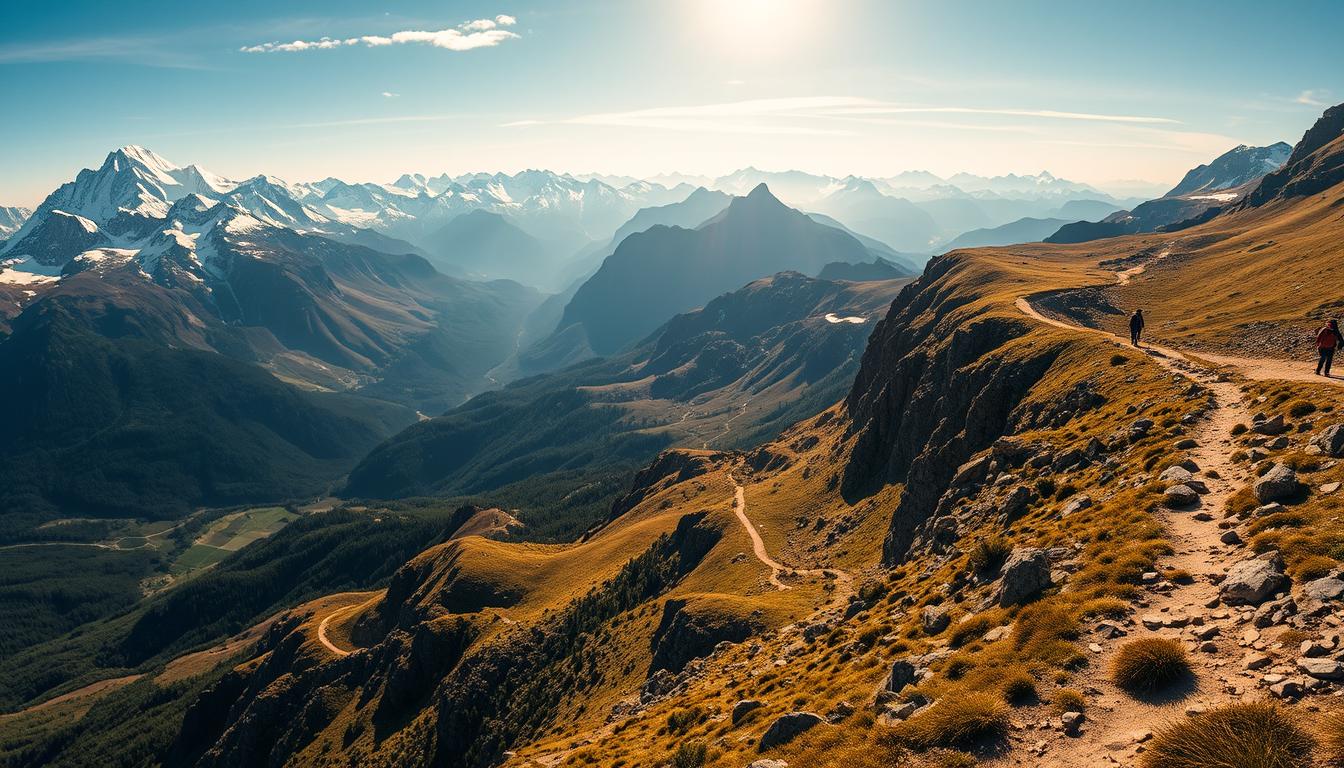Best Hiking Trails Around the World
Did you know over 50 million Americans explored outdoor trails last year? While many stick to local routes, the most transformative adventures often lie beyond familiar horizons. This guide reveals paths that redefine what it means to connect with nature—routes where jagged peaks pierce clouds and coastal winds carry whispers of ancient landscapes.
From single-day treks to month-long expeditions, these journeys offer more than exercise. They challenge limits, spark cultural discoveries, and reward travelers with views that linger in memory long after boots come off. Each trail earns its legendary status through unique features: sacred summits, geological wonders, or routes that shaped history.
What unites them? A power to shift perspectives. Completing these treks isn’t just about endurance—it’s about joining a global community of explorers who’ve stood where few dare to venture. Ready to turn 2023 into your most unforgettable year yet?
Key Takeaways
- Global trails offer diverse challenges, from single-day walks to cross-border expeditions
- Legendary routes combine natural beauty with cultural or historical significance
- Physical achievements on these treks often lead to profound personal growth
- Proper planning transforms daunting journeys into achievable adventures
- Trails connect travelers to both nature and global communities of explorers
Introduction to Epic Hiking Adventures
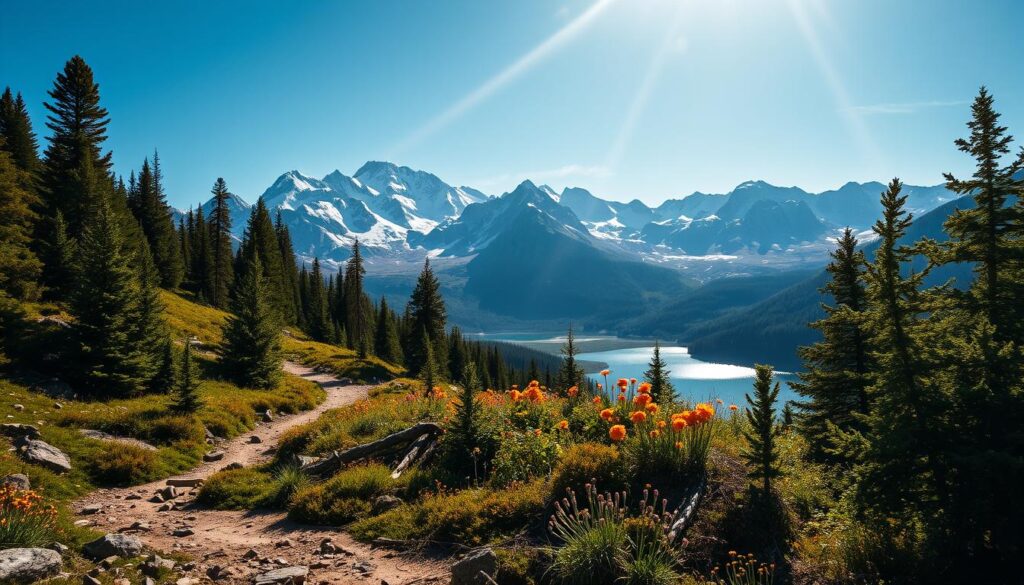
What transforms a simple walk into a life-altering journey? As T.S. Eliot observed, “Only those who risk going too far can possibly find out how far they can go.” This truth beats at the heart of every legendary path—routes where earth meets sky and travelers meet their best selves.
What Makes a Trail Legendary?
Iconic routes share three secrets: jaw-dropping landscapes, cultural heartbeat, and transformative challenges. The table below reveals how extraordinary paths differ from ordinary walks:
| Feature | Regular Trail | Legendary Route |
|---|---|---|
| Views | Pleasant | Heart-stopping |
| History | Local stories | Ancient civilizations |
| Impact | Exercise | Life perspective shifts |
These paths demand more than stamina. They ask hikers to embrace uncertainty—whether crossing Andean passes or tracing Silk Road remnants.
The Global Appeal of Hiking
From Japanese forest baths to Appalachian thru-hikers, adventurers worldwide share a common language: muddy boots and wide eyes. Modern life’s buzz fades with each step up mountain switchbacks.
Seekers find more than Instagram moments. They discover hidden villages where elders share tea, and dawn light paints cliffs gold. Every summit teaches the same lesson—our greatest limits live in minds, not maps.
Hiking Trails Around the World
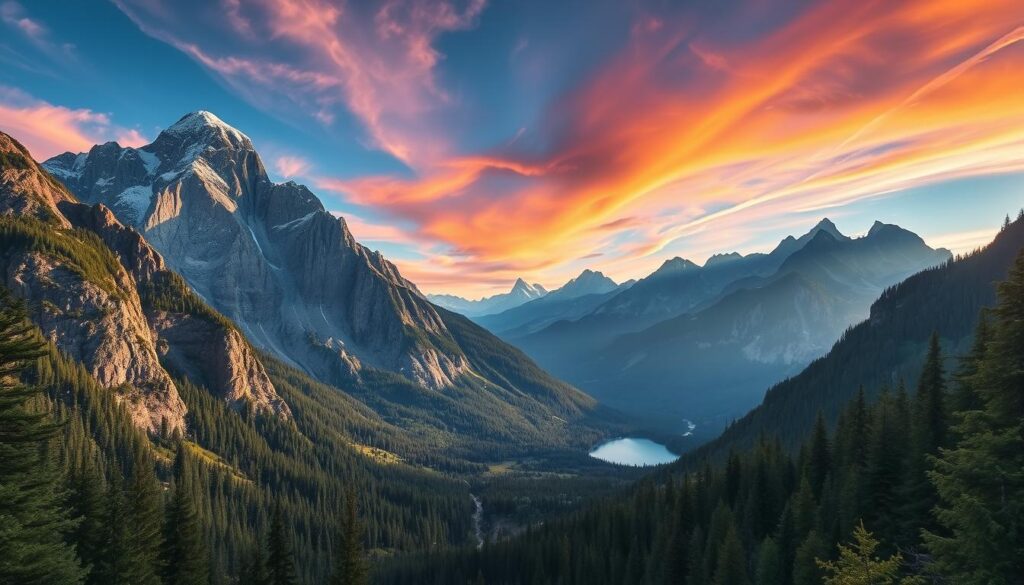
Adventure seekers often debate: famous trails or secret paths? Our experts curated 19 global routes balancing both—where footpaths tell stories through shifting sands and alpine meadows. These journeys transform wanderers into storytellers.
Iconic Routes and Hidden Gems
What separates bucket-list destinations from under-the-radar treasures? Legendary paths like Peru’s Inca Trail draw crowds for good reason, while quieter alternatives offer untracked snowfields and silent forests. See how they compare:
| Feature | Iconic Routes | Hidden Gems |
|---|---|---|
| Foot Traffic | Thousands weekly | Solitude guaranteed |
| Navigation | Well-marked | Self-guided |
| Rewards | Historic landmarks | Untamed ecosystems |
Our selection process weighs four factors: jaw-dropping vistas, cultural connections, trail conditions, and safety considerations. Volcanic ridges in Iceland test endurance differently than Nepal’s high passes—each demands specific prep.
“The best routes aren’t just walks—they’re conversations with the planet,” notes Appalachian Trail record-holder Jennifer Pharr Davis. Whether tackling multi-day hikes or dawn patrol missions, match your ambition to Earth’s rhythm. Expert-vetted options ensure you’ll find paths that fit like worn-in boots.
Navigating Iconic South American Routes
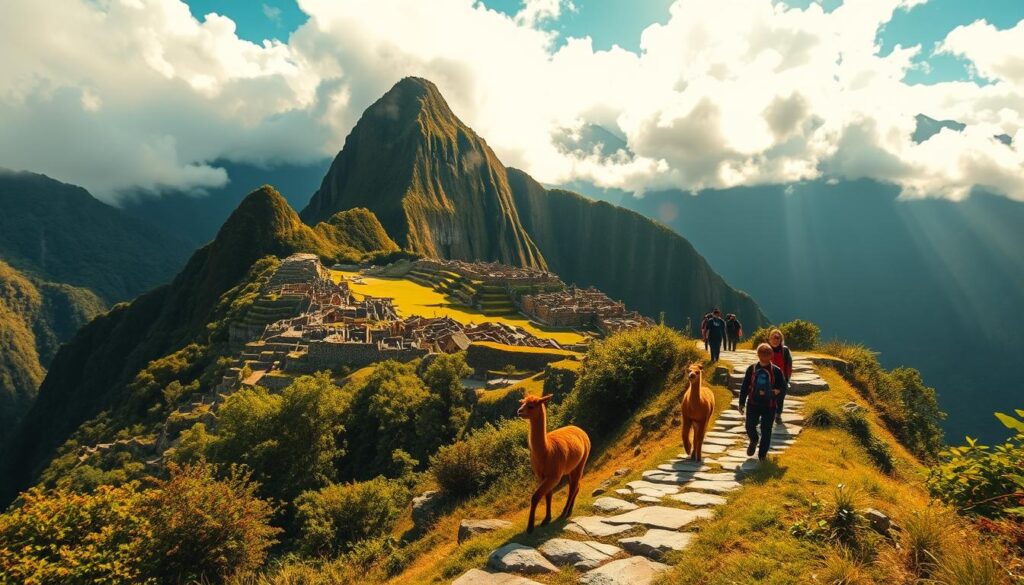
South America’s rugged landscapes whisper tales of ancient explorers through every switchback and valley. Where stone pathways meet glacier-carved peaks, adventurers find routes that blend human history with raw natural power.
The Inca Trail and Salkantay Alternatives
The Inca Trail remains South America’s crown jewel—a four-day journey through cloud forests and alpine passes. Walkers pass 500-year-old ruins where sunlight filters through trapezoidal doorways. “This path isn’t just stones—it’s pages from history,” says local guide Marco Quispe.
Prefer solitude? The Salkantay Trek offers a 45-mile alternative route to Machu Picchu. Its higher elevations (15,200ft) reveal turquoise glacial lakes and fewer foot traffic. Both trails culminate at the iconic citadel, where dawn light transforms ancient walls into golden mirrors.
Patagonia’s Torres del Paine Experience
Chile’s Torres del Paine redefines remote beauty. The W-Trek spans 50 miles over four days, weaving past granite towers and electric-blue icebergs. Each campsite delivers new drama—whether howling winds sculpting peaks or condors riding thermal currents.
Key contrasts between routes:
| Feature | Inca Trail | Torres del Paine |
|---|---|---|
| Duration | 4 days | 4-7 days |
| Elevation | 13,828ft | 2,952ft |
| Main Attraction | Ancient ruins | Glacial formations |
These paths prove adventure thrives where culture and wilderness collide. Whether tracing Inca engineers’ footsteps or navigating Patagonia’s raw edges, every mile reshapes perspectives.
Exploring European Alpine Wonders
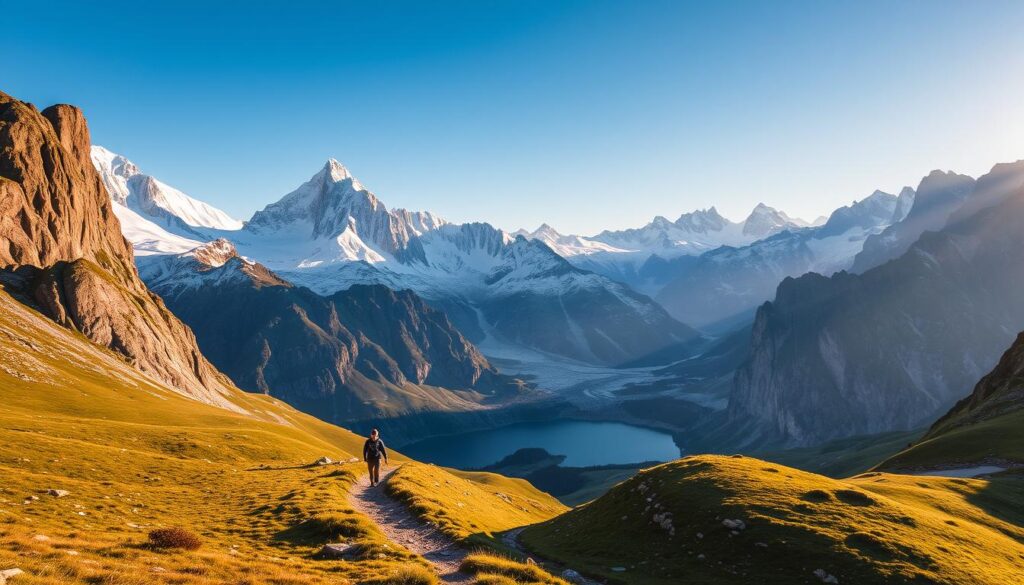
Imagine waking to cowbells echoing across valleys where three countries meet—Switzerland, France, and Italy spread below like a living map. Europe’s alpine routes blend natural drama with cozy comforts, where every bend reveals storybook villages or glaciers polishing ancient rock.
Tour du Mont Blanc and Scenic Passes
The Tour du Mont Blanc transforms walkers into time travelers. Over 7-11 days, this 170-kilometer loop crosses six passes where clouds cling to 15,781-foot peaks. “You’re not just crossing borders—you’re tracing the heartbeat of the Alps,” notes Chamonix guide Élise Dubois.
Chocolate-box chalets with flower-filled balconies dot the route, while mountain huts serve steaming tartiflette and blueberry tarts. Hikers swap stories in dormitories as stars pierce the thin alpine air—a ritual unchanged for generations.
Tre Cime de Lavaredo Loop and Other Marvels
Italy’s Dolomites counterbalance Mont Blanc’s grandeur with razor-edged elegance. The Tre Cime loop circles three limestone spires that glow rose-gold at dawn. WWI tunnels carved into these cliffs whisper tales of soldiers who once scaled these heights.
| Feature | Tour du Mont Blanc | Tre Cime Loop |
|---|---|---|
| Distance | 110 miles | 6 miles |
| Elevation Gain | 32,800ft | 1,600ft |
| Signature Sight | Glacial valleys | Limestone towers |
Both routes prove Europe’s alpine trails masterfully mix challenge and charm. Whether savoring fondue in a mountain hut or tracing WWI history on a via ferrata, these paths turn footsteps into lasting memories.
Traversing the Majestic Himalayas
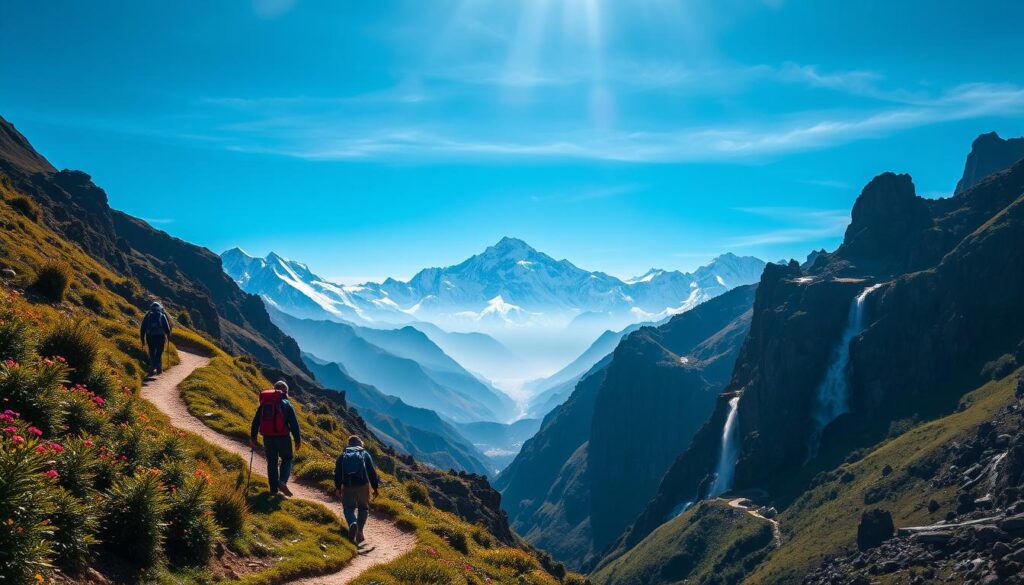
Where stone paths become stairways to the sky, the Himalayas teach hikers humility through elevation. This range hosts Earth’s most dramatic classrooms—where thin air whispers ancient wisdom and glaciers carve history into rock.
Annapurna Sanctuary and Sherpa Culture
The Annapurna Sanctuary cradles adventurers in a natural cathedral of towering peaks. Over eleven days, hikers navigate rhododendron forests and suspension bridges to reach this glacial basin. Local teahouses serve steaming dal bhat while sharing stories of Sherpa communities tending yaks at 12,000 feet.
Key highlights:
- Machhapuchhare’s fishtail summit piercing cloud layers
- Morning prayers echoing through Buddhist gompas
- Multi-day treks revealing valleys unseen by roads
Everest Base Camp: A Journey of Endurance
Reaching the foot of the highest mountain demands grit. The twelve-day Everest trek tests lungs and legs while rewarding hikers with Sagarmatha’s icy crown. “Every step above 18,000 feet rewrites your limits,” notes altitude guide Nima Sherpa.
| Feature | Annapurna | Everest |
|---|---|---|
| Duration | 11 days | 12-14 days |
| Highest Point | 13,550ft | 18,519ft |
| Cultural Focus | Village life | Expedition history |
Both routes prove Himalayan journeys transcend physical challenges. Whether sipping butter tea with locals or tracing mountaineering legends, these treks transform visitors into temporary custodians of mountain wisdom.
Cultural Trails with Ancient History
From cliffside pathways to jungle-hidden cities, these routes are history lessons in motion. Unlike ordinary walks, they reveal civilizations’ fingerprints through weather-worn stones and whispers of forgotten builders. Each mile traveled becomes a dialogue across centuries.
El Caminito de Rey and Historical Routes
Spain’s “Little Pathway of the King” defies gravity along rock walls above Guadalhorce River. Rebuilt in 2015, this 2.9-mile route follows a 1901 workers’ trail once dubbed “world’s most dangerous walk.” Modern steel walkways let adventurers safely marvel at limestone gorges where railway builders once dangled by ropes.
Ciudad Perdida: Exploring the Lost City
Colombia’s answer to Machu Picchu demands grit. Reaching the 1,200-year-old Tayrona city requires 4-6 days through jungles and river crossings. Local Indigenous people guide hikers up 1,200 mossy steps to terraces hidden for centuries. Unlike crowded town sites, this 27-mile trail rewards with undisturbed wonder—a testament to journeys that outlast empires.
FAQ
What are the best alternatives to the Inca Trail in South America?
How difficult is the Tour du Mont Blanc in Europe?
What makes Patagonia’s Torres del Paine route unique?
Is Everest Base Camp suitable for beginners?
Why is El Caminito de Rey in Spain called the “King’s Little Pathway”?
How does the Annapurna Sanctuary Trek blend culture and nature?
Are permits required for Ciudad Perdida in Colombia?
What’s special about the Tre Cime di Lavaredo loop in the Dolomites?

Eduard Kingly is a travel and lifestyle content creator with a focus on personal development and education. He combines firsthand travel experiences with research-driven insights to guide readers in discovering new places, building better habits, and pursuing meaningful learning.

